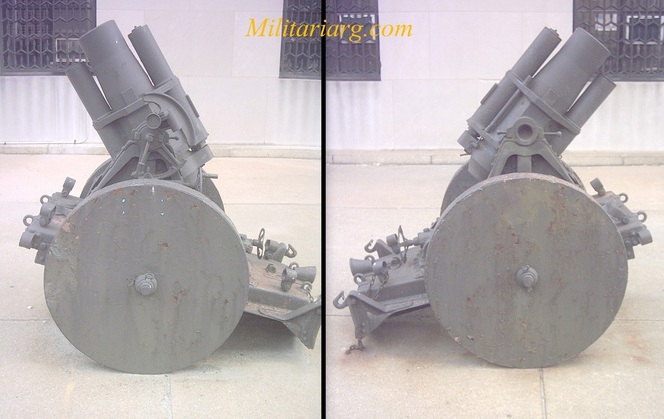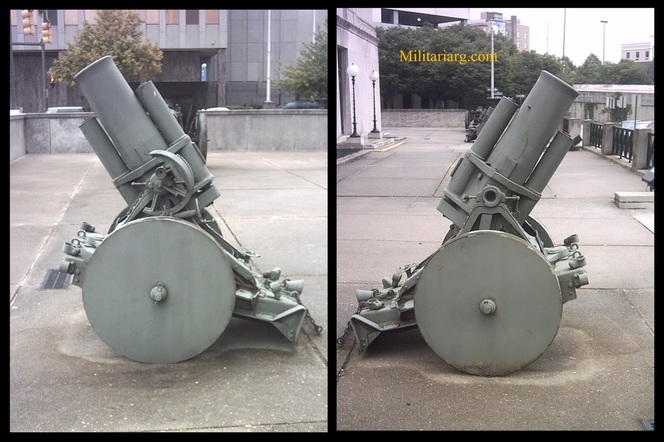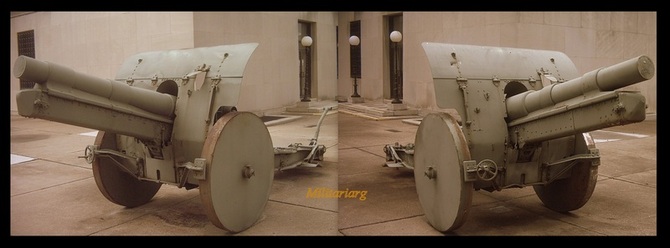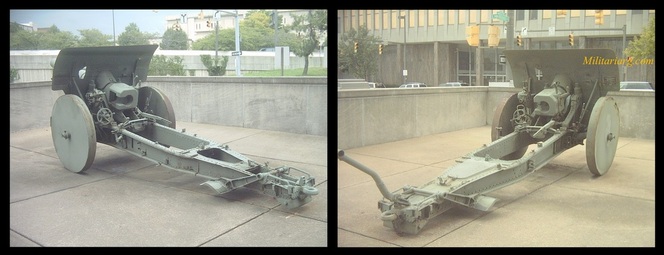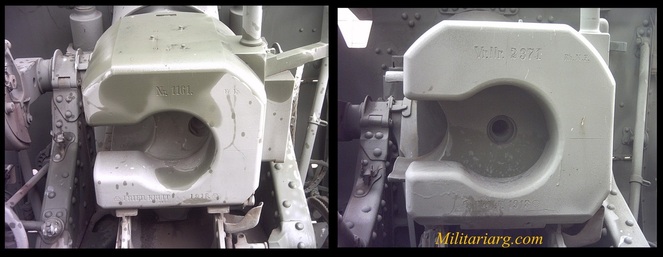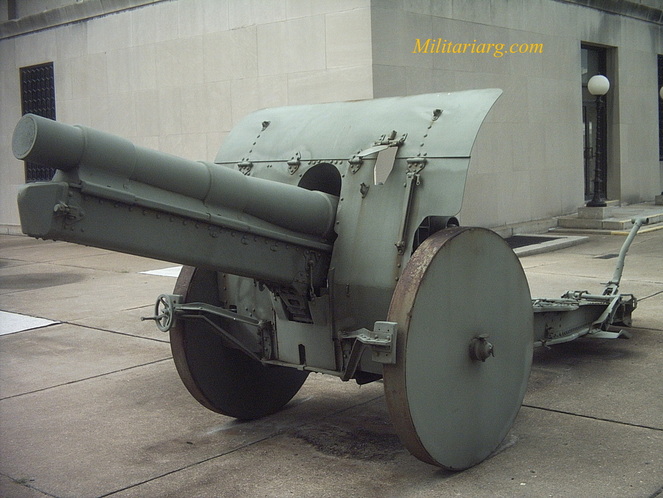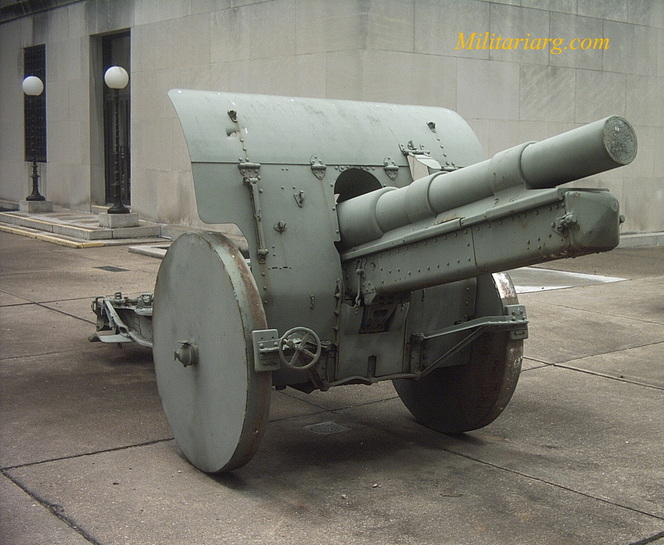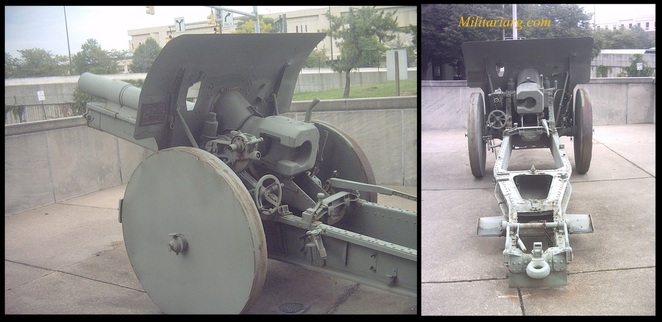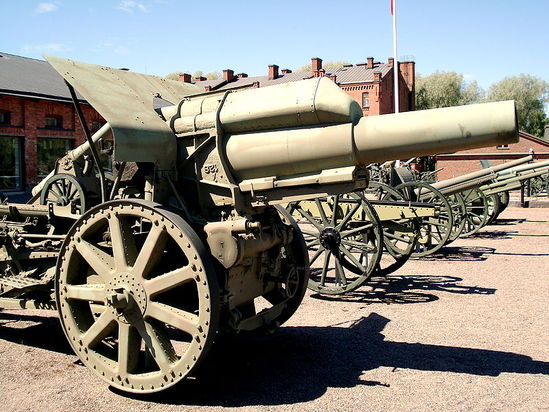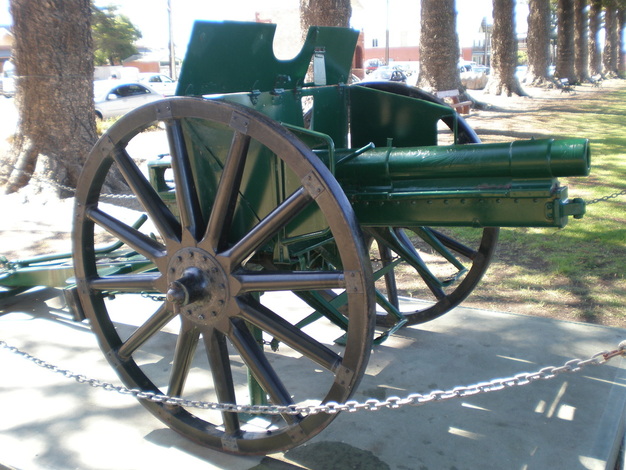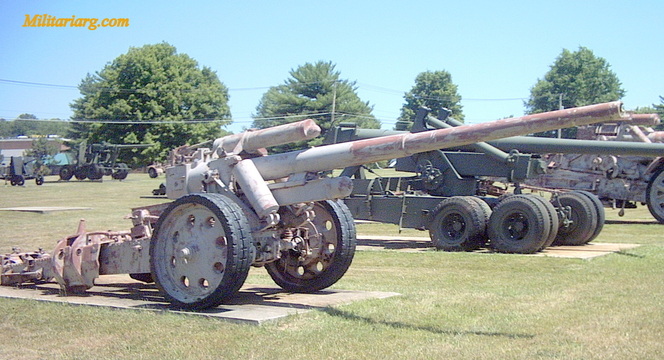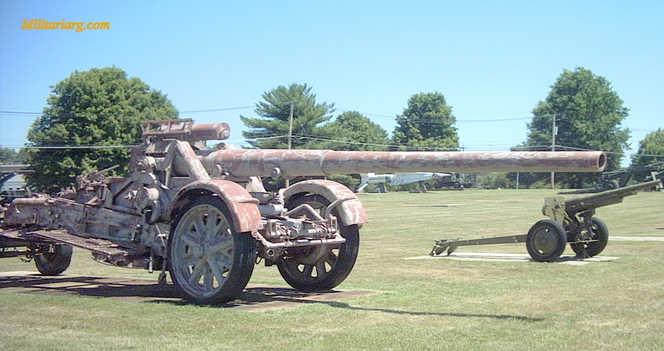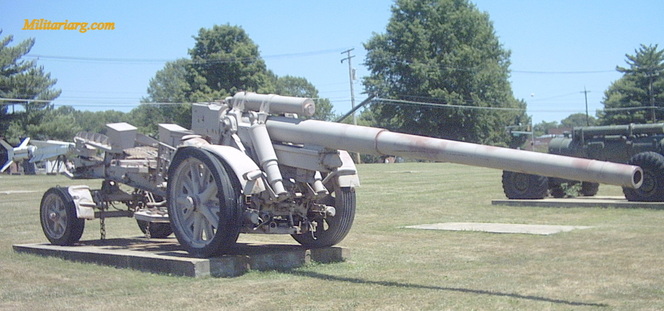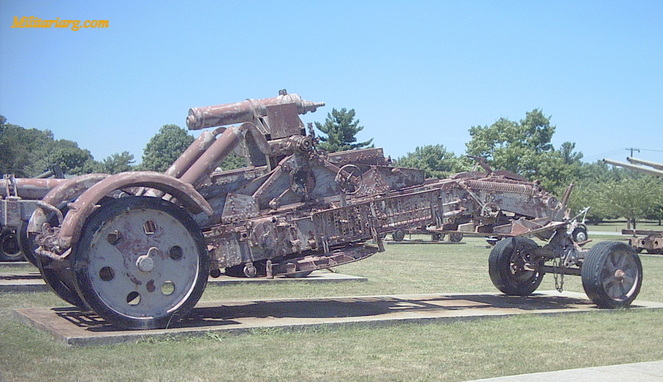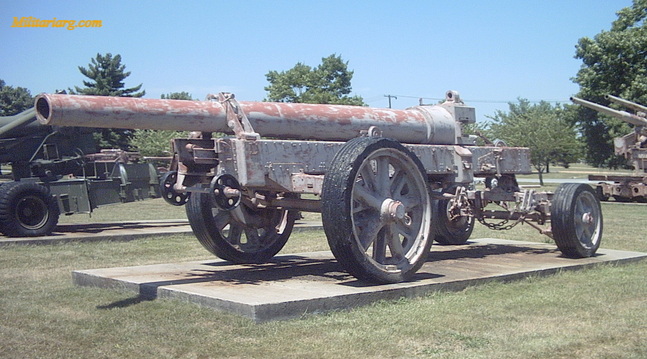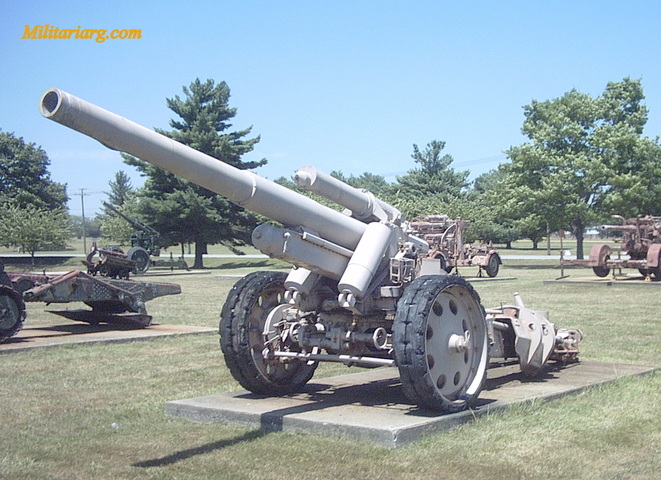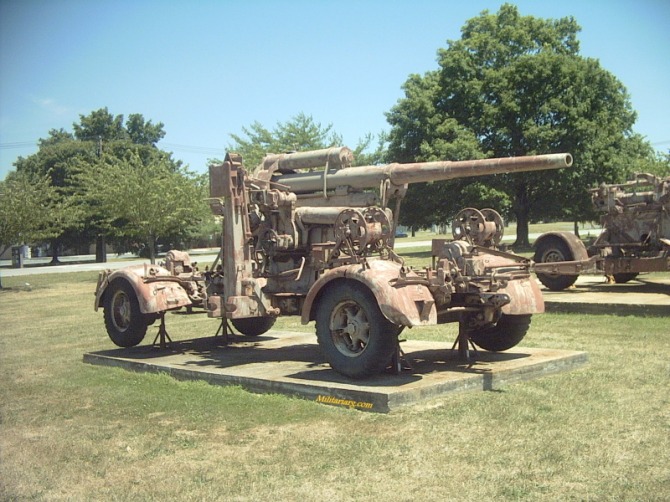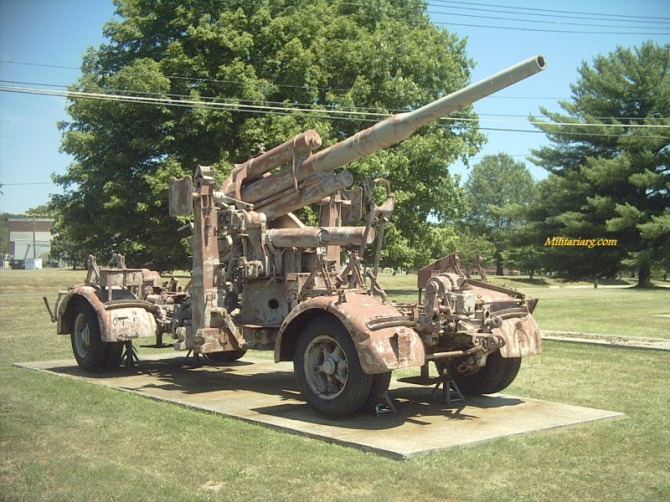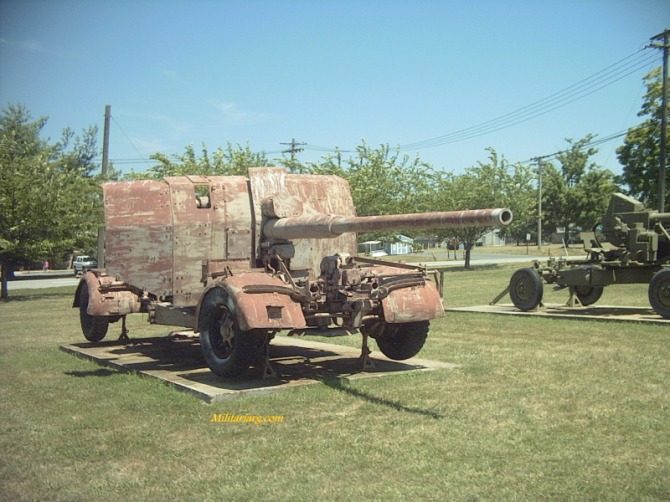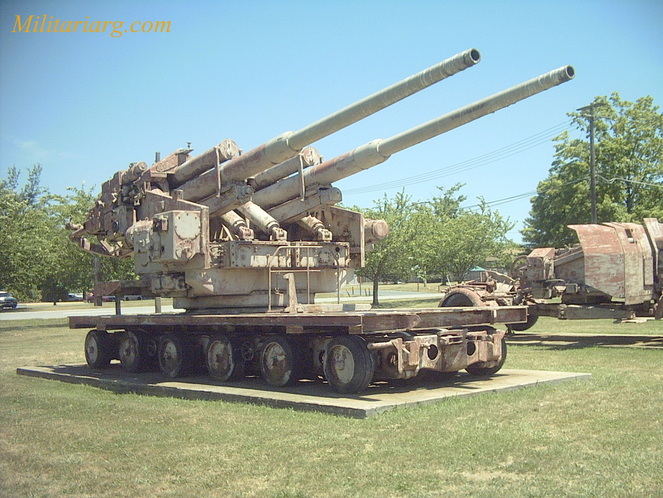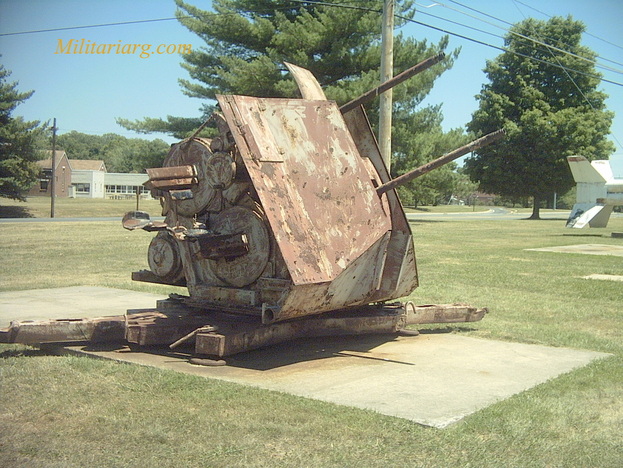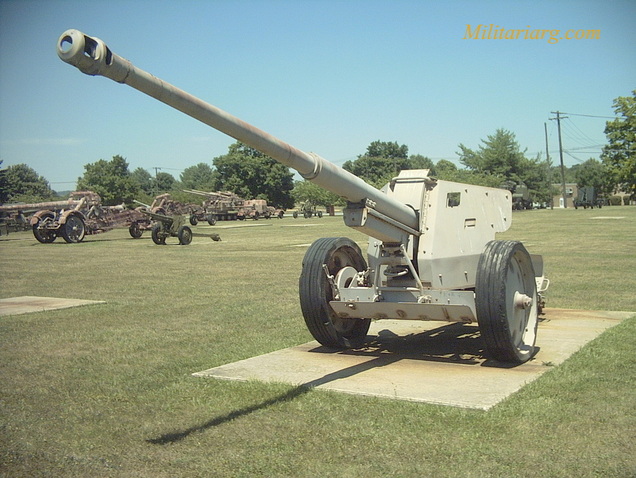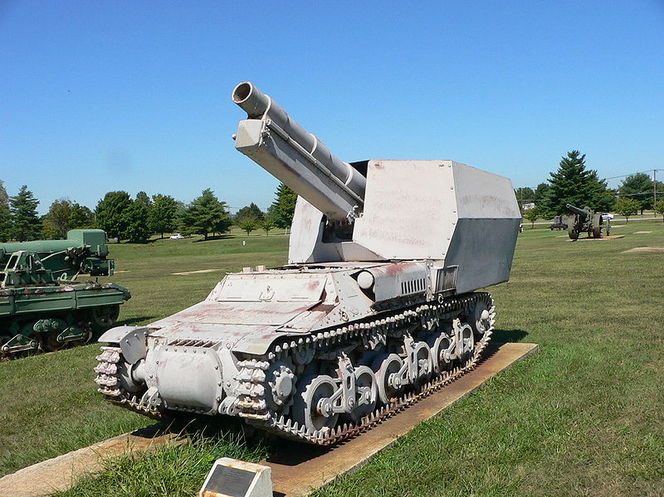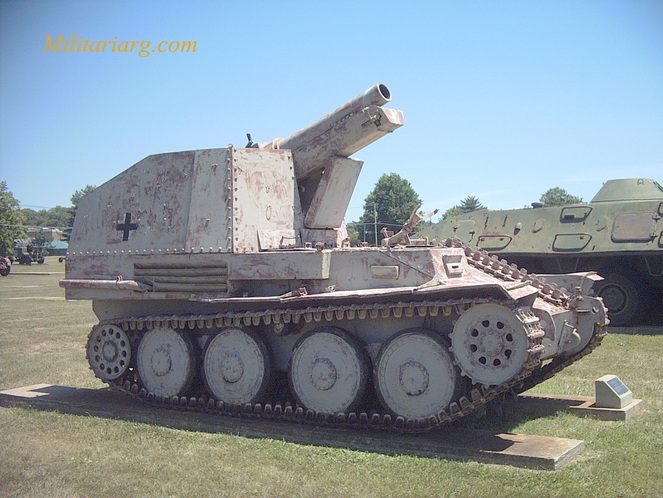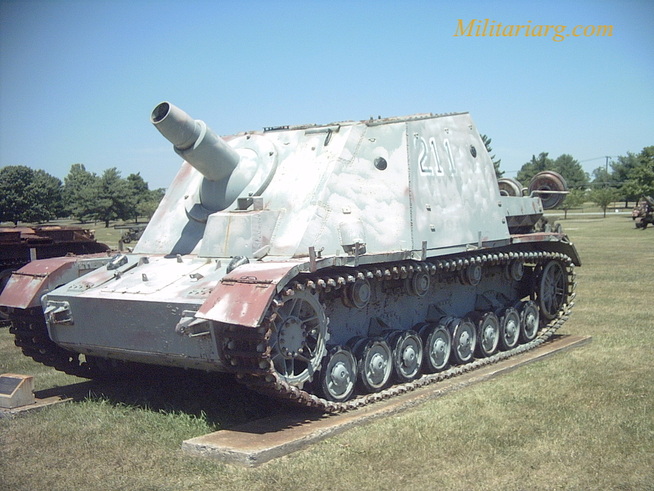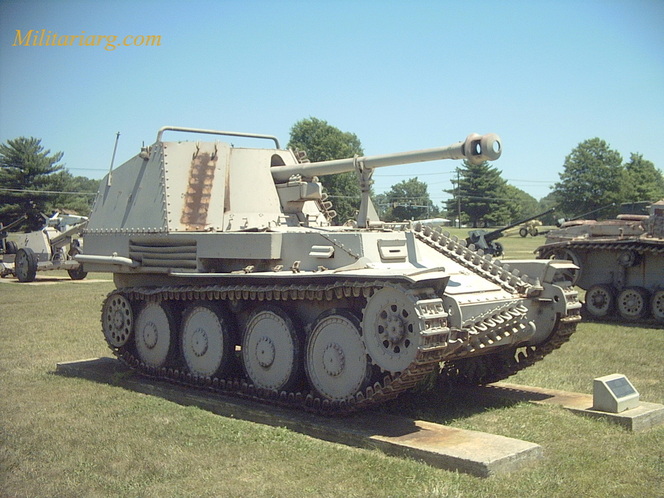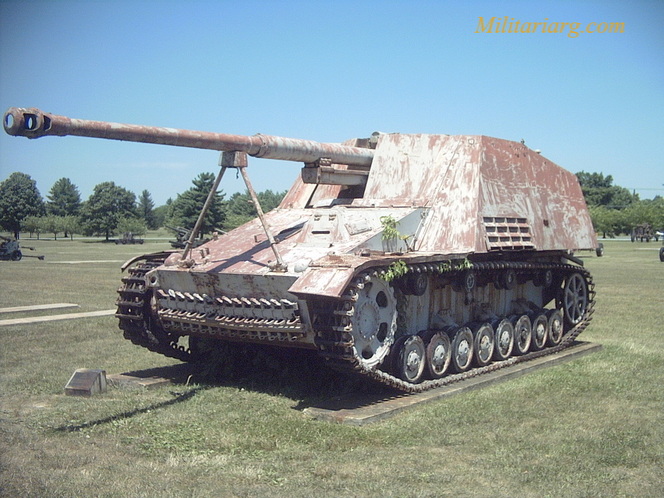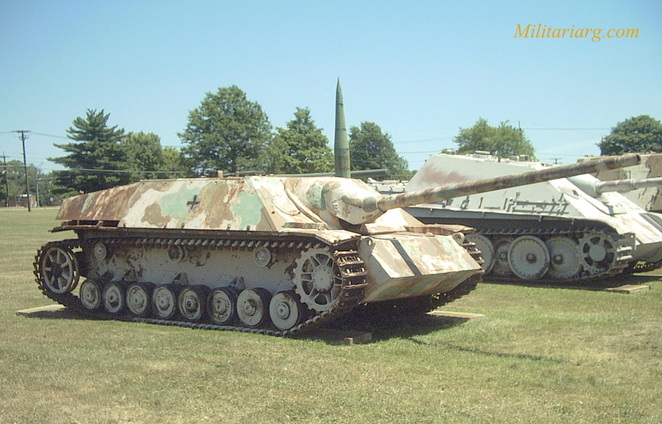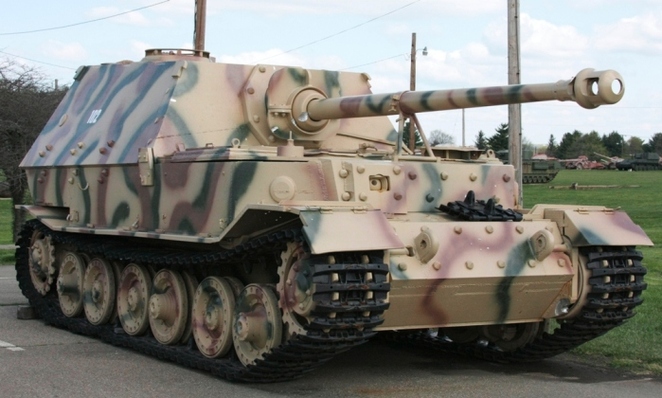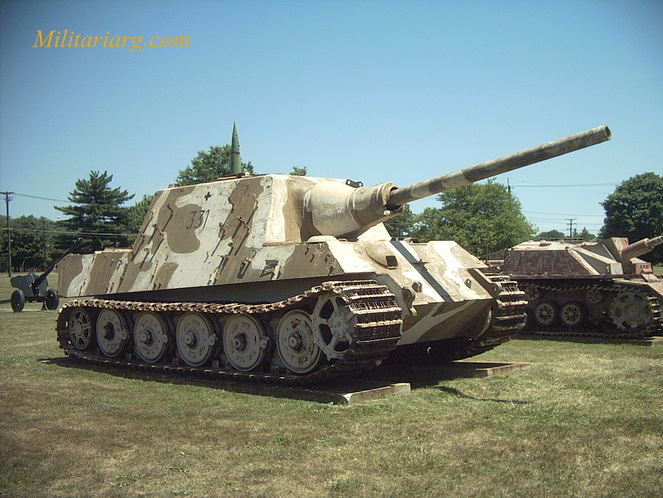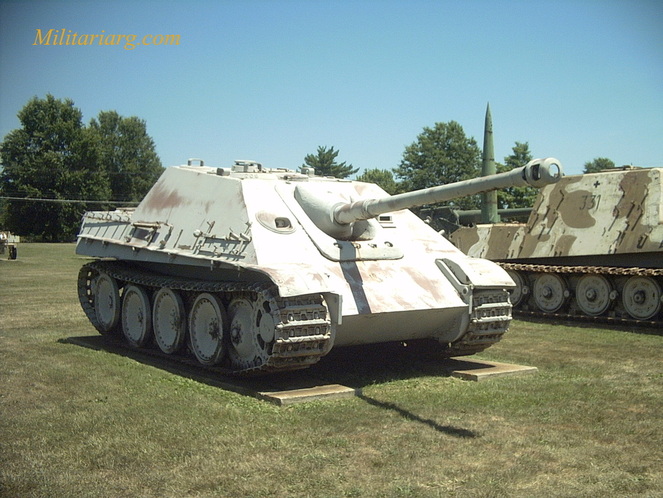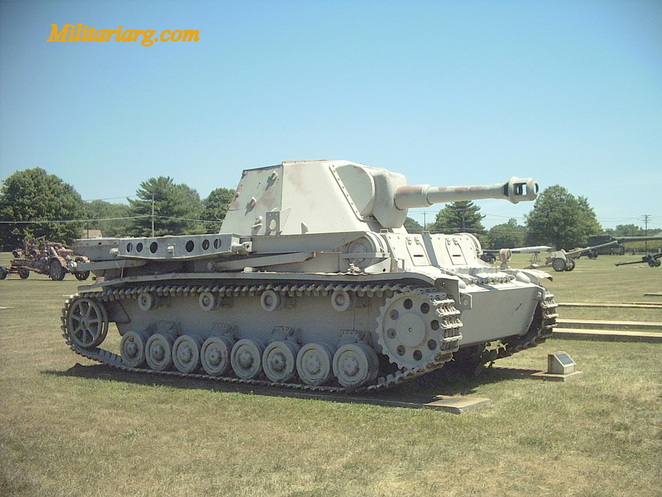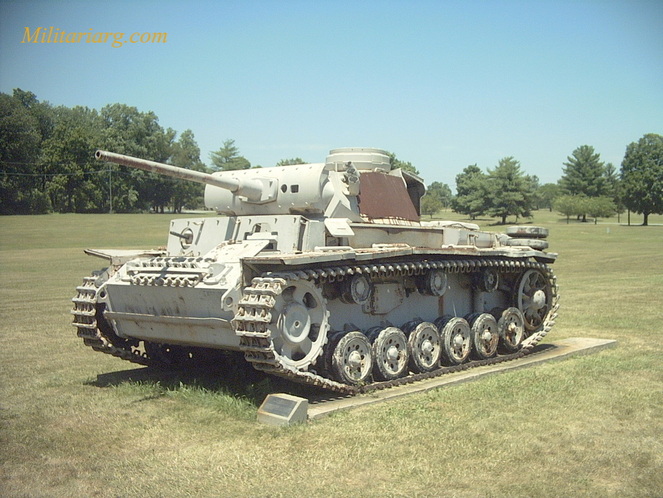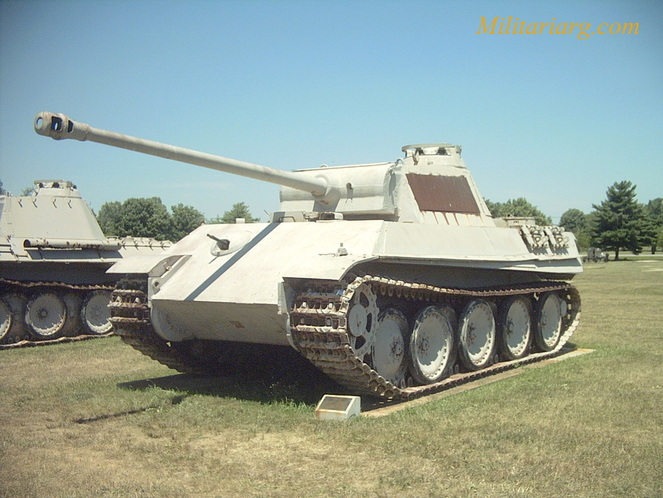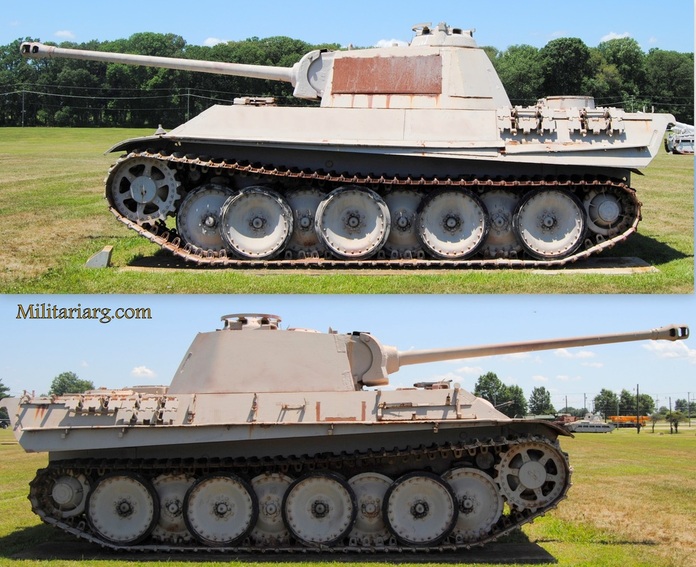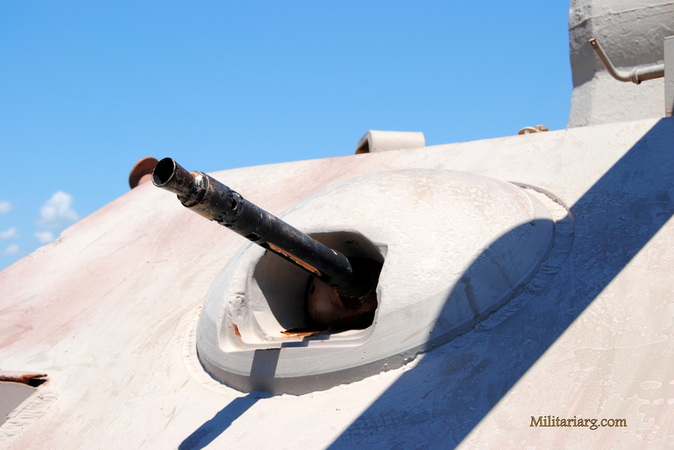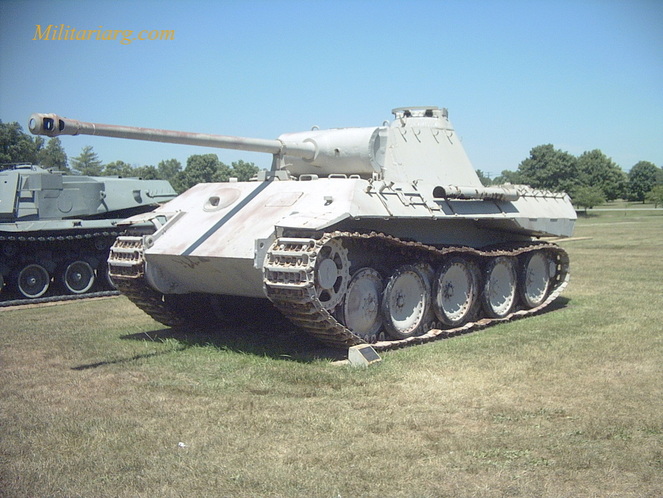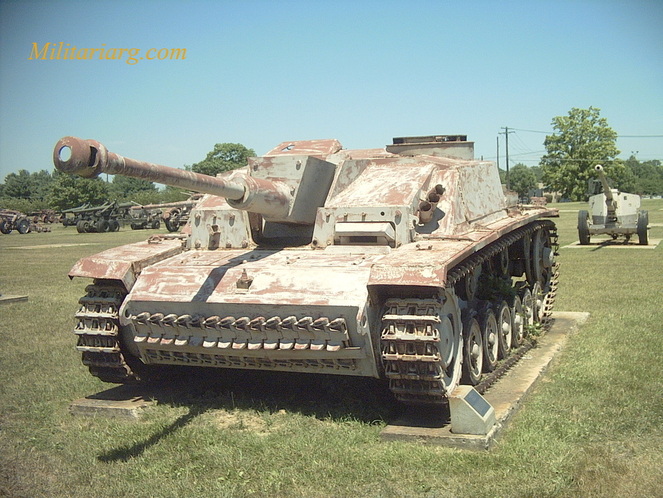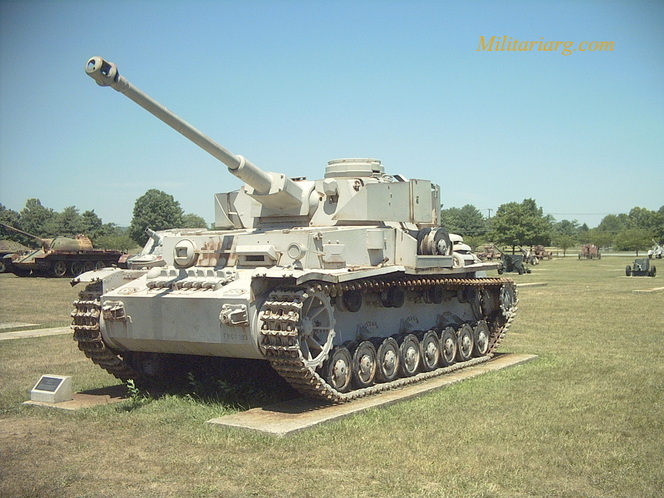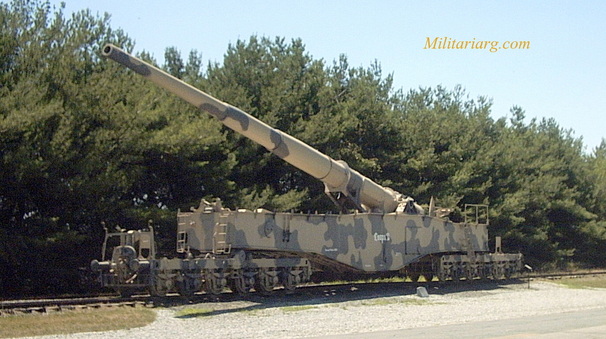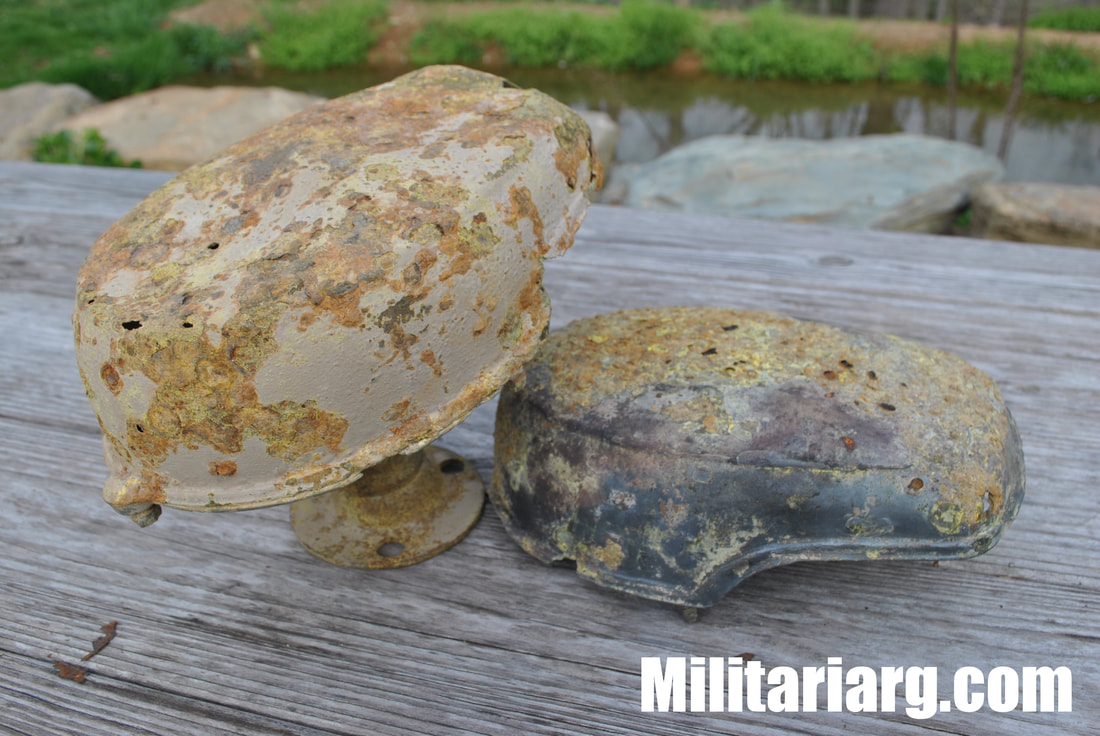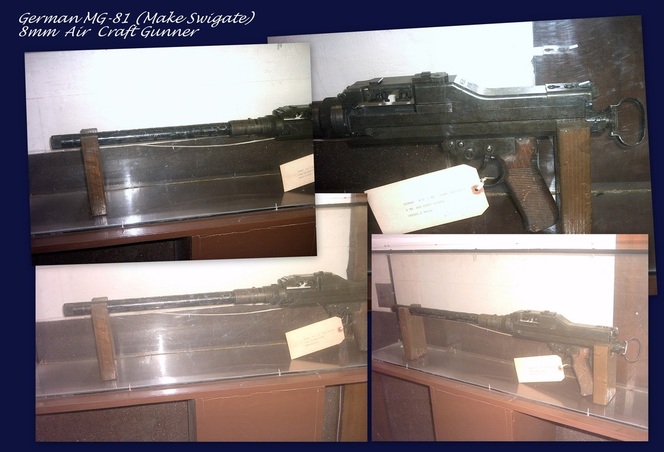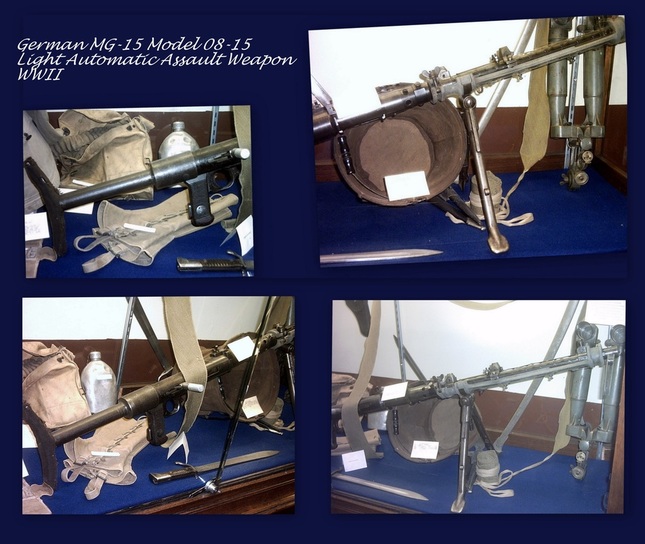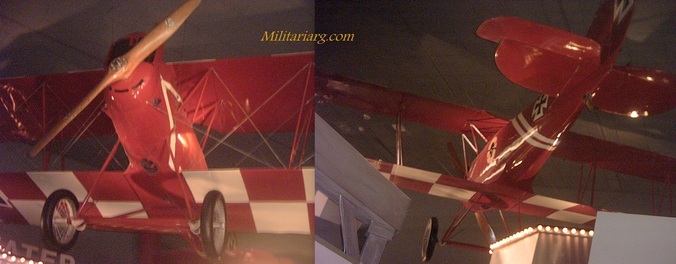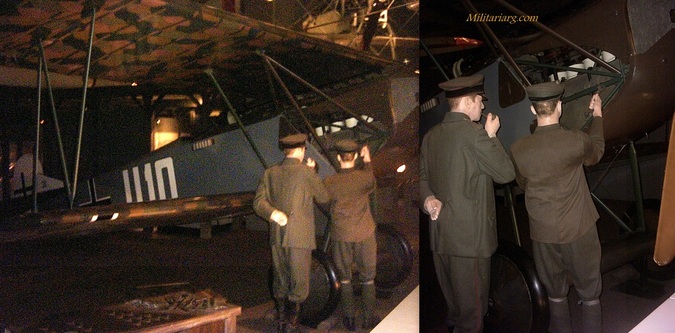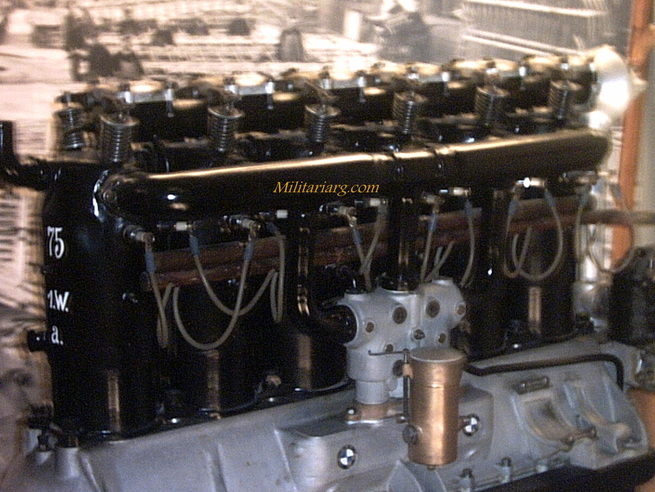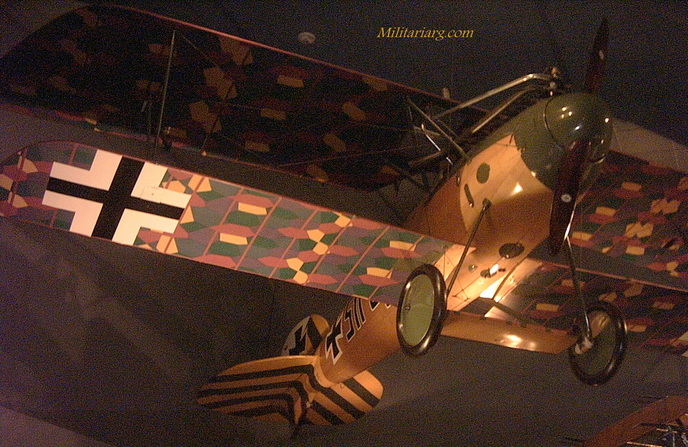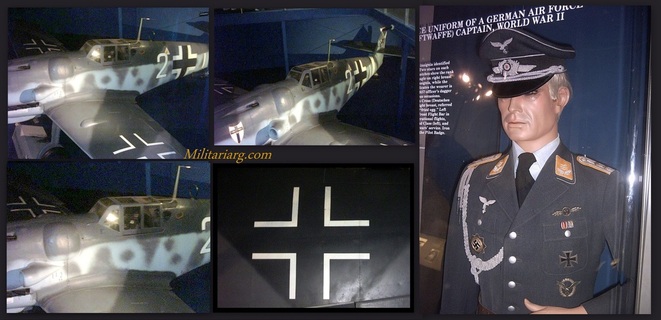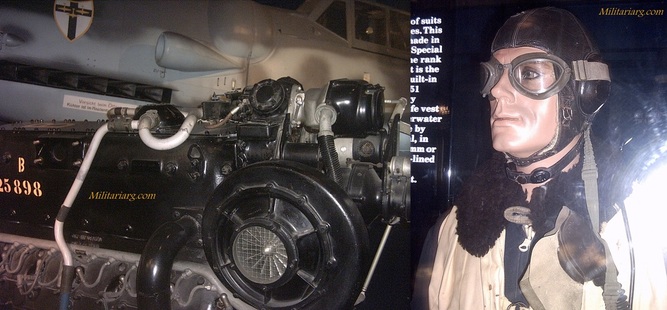German Artillery WWI and WWII
170mm German Minenwerfer.
German 170mm and 250mm Minenwerfer, (War Memorial Plaza in Downtown Baltimore Maryland).
Minenwerfer, ("mine launcher") is the German name for a class of short range mortars used extensively during the First World War by the German Army. The weapons were intended to be used by engineers to clear obstacles including bunkers and barbed wire, that longer range artillery would not be able to accurately target.
German 250mm Minenwerfer. (War Memorial Plaza in Downtown Baltimore Maryland).
The Germans studied the Siege of Port Arthur, where heavy artillery had been unable to destroy defensive structures like barbed wire and bunkers. The German Military Ingenieurkomitee (Engineer committee) began working with Rheinmetall to study the problem in 1907. The solution they developed was short barreled rifled muzzle loading mortar, built in three sizes. The largest of these was introduced first, in 1910 as the 25 cm schwerer Minenwerfer(in English, the 25cm large minelauncher) (sMW). Despite weighing only 955 kg(2193 pounds) it had the same effect on targets as the 28 cm and 30.5 cm mortars, which weighed ten times as much. At the outbreak of the First World War 44 had been delivered. They were used successfully in Belgium at Liege and Namur, and against the French fortress of Maubeuge.
The medium version of the weapon, the 17 cm mittlerer Minenwerfer( 17cm mid sized mine launcher) (mMW) was introduced in 1913, and at the outbreak of war 116 were fielded.
The light version of the weapon, the 7.58 cm leichter Minenwerfer(light mine launcher) (LMW) was still at the prototype stage when the war started, but rapidly entered production. The weapon was far more efficient than its artillery counterpart. In comparison the 7.7 cm FK 96 n/A needed to be towed by a team of six horses, compared with a single horse for the LMW, additionally the LMW could be moved around the battlefield by four men. The minenwerfer was cheaper, costing only one seventh of the price of the artillery gun, and the ammunition was cheaper.
Since the muzzle velocity, and thus firing shock of the Minenwerfer was low, a variety of explosives that would usually be unsuitable for use in artillery were used to fill the shells. In any case, TNT explosive was reserved for use in artillery shells. Typically the explosives used in minenwerfers were Ammonium Nitrate-Carbon explosives. However the sensitivity of the explosives made them occasionally detonate in the tube. There were a large number of these incidents, one of which claimed the life of Karl Völler, head designer of Rheinmetall, in 1916. These problems, however, were eventually overcome.
Recognizing the numerous advantages of the Minenwerfer in trench warfare production was stepped up and by 1918 the numbers had increased dramatically to 1,234 heavy, 2,361 medium and 12,329 light Minenwerfer. A 38 cm calibre sehr schwerer Minenwerfer (ssMW) (in English, "very heavy mine launcher") was also developed.
Source: Wikipedia
Krupp and Rheinmetall 15cm s.F.H (schwere Feldhaubitze).
Left: Rheinmetall 15cm (150mm), L14 1913 M1918.
Right: Fried Krupp 15cm (150mm), L14 1913 M1916.
(War Memorial Plaza in Downtown, Baltimore, MD)
Right: Fried Krupp 15cm (150mm), L14 1913 M1916.
(War Memorial Plaza in Downtown, Baltimore, MD)
The 15 cm schwere Feldhaubitze 13 (15 cm sFH 13) was a heavy field howitzer used by Germany in World War I and World War II.
Designer Krupp. Designed 1913. Manufacturer Krupp, Rheinmetall, Spandau
Produced 1913-1918
Variants were the original "kurz" (L/14 - 14 caliber short barrel version); later lg. sFH13 with a longer barrel; and lg. sFH13/02 with modifications to simplify wartime manufacture of the lg. sFH.
The British referred to these and their shells as "5 point 9"s or "5 9"s as the bore was 5.9 inches (150 mm). The ability of these guns to deliver mobile heavy firepower close to the frontline gave the Germans a major firepower advantage on the Western Front early in World War I, as the French and British lacked an equivalent. It was not until late 1915 that the British began to deploy their own 6 inch 26 cwt howitzer.
Guns turned over to Belgium and the Netherlands as reparations after World War I were taken into Wehrmacht service after the conquest of the Low Countries as the 15 cm sFH 409(b) and 406(h) respectively.
Source: Wikipedia
Designer Krupp. Designed 1913. Manufacturer Krupp, Rheinmetall, Spandau
Produced 1913-1918
Variants were the original "kurz" (L/14 - 14 caliber short barrel version); later lg. sFH13 with a longer barrel; and lg. sFH13/02 with modifications to simplify wartime manufacture of the lg. sFH.
The British referred to these and their shells as "5 point 9"s or "5 9"s as the bore was 5.9 inches (150 mm). The ability of these guns to deliver mobile heavy firepower close to the frontline gave the Germans a major firepower advantage on the Western Front early in World War I, as the French and British lacked an equivalent. It was not until late 1915 that the British began to deploy their own 6 inch 26 cwt howitzer.
Guns turned over to Belgium and the Netherlands as reparations after World War I were taken into Wehrmacht service after the conquest of the Low Countries as the 15 cm sFH 409(b) and 406(h) respectively.
Source: Wikipedia
Rheinmetall s.F.H 1913 15cm (150mm), L14 M1918. (War Memorial Plaza in Downtown, Baltimore, MD)
Fried Krupp 15cm (150mm), L14 1913 M1916. (War Memorial Plaza in Downtown, Baltimore, MD)
Krupp s.F.H 15cm (150mm( Heavy Howitzer). Trophy of World War 1917-1919. Presented by The War Department Washington 1925. (Memorial War Plaza Baltimore).
Recommended read:
http://www.lovettartillery.com/Development_of_German_Heavy_Artillery.html
http://www.lovettartillery.com/index.html
http://www.landships.freeservers.com/sFH13.htm
http://wapedia.mobi/en/15_cm_sFH_13
Recommended read:
http://www.lovettartillery.com/Development_of_German_Heavy_Artillery.html
http://www.lovettartillery.com/index.html
http://www.landships.freeservers.com/sFH13.htm
http://wapedia.mobi/en/15_cm_sFH_13
21 cm Mörser 16 in Hämeenlinna Finnish Artillery Museum. It was based on the earlier 21 cm Mörser 10, but had a longer barrel, a gun shield and other refinements. Originally it broke down into two loads for transport, but the Germans rebuilt surviving guns during the Thirties with rubber-rimmed steel wheels to allow for motor traction in one piece with a limber under the trail and generally removed the gunshield. Wikipedia.
77mm Field Gun. Photo: Wikipedia.
German 10.5cm sK 18 Cannon.
German 17cm 170mm Kanone 18
German 15cm k18 Gun.
German Morser Mrs 18 21cm 210mm Howitzer Carriage.
German Morser Mrs 18 21cm 210mm.
German 15cm 150mm sFH 18 howitzer.
Air Defense Artillery
FLAK (Flugzeugabwehr-Kanone). Krupp 88mm L56 18/36/37
Krupp 88mm 8.8 Flak 18. (US Army Ordnance Museum).
Krupp 88mm 8.8 Flak 36. (U.S Army Ordnance Museum).
Krupp 88mm 8.8 Flak 41 (U.S Army Ordnance Museum).
Flakzwilling 40 or 12.8 cm FlaK 40 Zwilling anti-aircraft gun at US Army Ordnance Museum.
The 12.8 cm FlaK 40, was a German World War II anti-aircraft gun built as the successor to the 88 mm gun. Although it was not produced in high numbers, it was one of the most effective heavy AA guns of its era.
Development of the gun began in 1936, with the contract being awarded to Rheinmetall Borsig, the first prototype gun was delivered for testing in late 1937 and completed testing successfully. The gun weighed nearly 12 tonnes in its firing position, with the result that its barrel had to be removed for transport. Limited service testing showed this was impractical, so in 1938 other solutions were considered.
The eventual solution was to simplify the firing platform, based on the assumption it would always be securely bolted into concrete. The total weight of the system reached 26.5 tonnes, making it practically impossible to tow cross-country. In the end this mattered little, since by the time the gun entered production in 1942 the production of mobile guns larger than 105 mm was prohibited. In August 1944 there were 450 such cannons available. As a result only a few were built and used, amongst other places, in the anti-aircraft flak towers protecting Berlin, Hamburg, and Vienna. Approximately 200 were mounted on railcars, providing limited mobility.
The gun fired a 27.9 kg (57.2-pound) shell at 880 m/s (2,890 ft/s) to a maximum ceiling of 14,800 m (48,556 ft). Compared with the 88mm FlaK 18 & 36, the 128 used a powder charge four times as great which resulted in a shell flight time only one-third as long. This made aim against fast-moving targets much easier.
(Wikipedia)
Development of the gun began in 1936, with the contract being awarded to Rheinmetall Borsig, the first prototype gun was delivered for testing in late 1937 and completed testing successfully. The gun weighed nearly 12 tonnes in its firing position, with the result that its barrel had to be removed for transport. Limited service testing showed this was impractical, so in 1938 other solutions were considered.
The eventual solution was to simplify the firing platform, based on the assumption it would always be securely bolted into concrete. The total weight of the system reached 26.5 tonnes, making it practically impossible to tow cross-country. In the end this mattered little, since by the time the gun entered production in 1942 the production of mobile guns larger than 105 mm was prohibited. In August 1944 there were 450 such cannons available. As a result only a few were built and used, amongst other places, in the anti-aircraft flak towers protecting Berlin, Hamburg, and Vienna. Approximately 200 were mounted on railcars, providing limited mobility.
The gun fired a 27.9 kg (57.2-pound) shell at 880 m/s (2,890 ft/s) to a maximum ceiling of 14,800 m (48,556 ft). Compared with the 88mm FlaK 18 & 36, the 128 used a powder charge four times as great which resulted in a shell flight time only one-third as long. This made aim against fast-moving targets much easier.
(Wikipedia)
German (Flakzwilling) FlaK 43 37mm anti-aircraft gun.
Anti-Tanks Guns
Left: German PAK 35/36 anti-tank gun. Right: Soviet 45mm M42 Pak.
The Pak 36 (Panzerabwehrkanone 36) was a German anti-tank gun that fired a 3.7 cm calibre shell. Design of a horse-drawn, 3.7 cm anti-tank gun (designated 3.7 cm Pak L/45) by Rheinmetall commenced in 1924 and the first guns were issued in 1928.
Wikipedia
The Pak 36 (Panzerabwehrkanone 36) was a German anti-tank gun that fired a 3.7 cm calibre shell. Design of a horse-drawn, 3.7 cm anti-tank gun (designated 3.7 cm Pak L/45) by Rheinmetall commenced in 1924 and the first guns were issued in 1928.
Wikipedia
8.8 cm Pak 43/41 at US Army Ordnance Museum.
Tanks, Self-Propelled and Other Armored vehicles
In the photo is a 15cm S.F.H 13 (Geschutzwagen Lorraine Sclepper) a German self-propelled built on a captured French Chassis (Tracteur Blindé 37L, Chenillette Lorraine). Photo: Wikipedia. Aberdeen Ordnance Museum.
The Grille (German: "cricket") series of self propelled artillery vehicles were used by Germany during World War II. The Grille series was based on the Czech Panzer 38(t) tank and used a 15 cm sIG 33 infantry gun. (Wikipedia)
The Sturmpanzer IV (also known as Sturmpanzer 43 or Sd.Kfz. 166, was a German armoured infantry support gun based on the Panzer IV chassis used in the Second World War. It was known by the nickname Brummbär (German: "Grumbler", not "Grizzly Bear") by Allied intelligence, a name which was not used by the Germans. German soldiers nicknamed it the "Stupa", a contraction of the term Sturmpanzer. (Wikipedia)
Marder III (Sd.Kfz.139) Tank Destroyer
Nashorn (German "rhinoceros", pronounced Nahz-horn, not Nash-orn), initially known as Hornisse (German "hornet") was a German tank destroyer of World War II. It was developed as an interim solution in 1942 and was armed with the outstanding PaK 43 anti-tank gun. Though only lightly armoured and with a high profile, it stayed in service until the end of the war and proved to be a quite successful tank destroyer. (Wikipedia).
Jagdpanzer IV
The Jagdpanzer IV, Sd.Kfz. 162, was a tank destroyer based on the Panzer IV chassis built in three main variants. As one of the casemate-style turretless Jagdpanzer ("Hunting tank") designs, it was developed against the wishes of Heinz Guderian, the inspector general of the Panzertruppen, as a replacement for the Sturmgeschütz III (StuG III). Guderian objected against the needless, in his eyes, diversion of resources from Panzer IV tank production, as the Stug III and Sturmgeschütz IV were still more than adequate for their role. (Wikipedia).
The United States Army Ordnance Museum's restored Elefant. (One of only two surviving Elephant).
The Panzerjäger Tiger (P) Elefant (German "elephant"; model number Sd.Kfz. 184) was a "Schwerer Panzerjäger" (heavy tank destroyer) of the German Wehrmacht in World War II. They were originally built under the name Ferdinand, after their designer, Ferdinand Porsche. (Wikipedia).
Jagdtiger. (US Army Ordnance Museum).
The Panzerjäger Tiger Ausf. B Jagdtiger (Sd. Kfz. 186) was a German tank destroyer (self-propelled antitank gun) Jagdpanzer of World War II. It saw service from late 1944 to the end of the war on both the Western Front and Eastern Front. The Jagdtiger was the heaviest armored fighting vehicle to see service during World War II. (Wikipedia)
The Jagdpanther (German: "hunting panther"), built by Germany during World War II based on the chassis of the Panther tank.
The Heuschrecke 10 (German: Grasshopper 10) was a prototype self-propelled gun and Waffenträger (German: "Weapon carrier") developed by Krupp-Gruson between 1943 and 1944. The official designation of the vehicle was 105 mm leichte Feldhaubitze 18/1 L/28 auf Waffenträger Geschützwagen IVb and was to be built in Magdeburg, Germany. The Heuschrecke featured a removable turret which could be deployed as a pillbox or towed behind the vehicle as an artillery piece.
Krupp produced only three prototypes from 1942–1943. The Heuschrecke initially made use of a shortened Panzerkampfwagen IV (Panzer IV) chassis, but it was later switched to the Geschützwagen IV chassis, developed for the Hummel self propelled gun. Mass production of the Heuschrecke 10 was scheduled to start in February 1945, but never eventuated.
Krupp produced only three prototypes from 1942–1943. The Heuschrecke initially made use of a shortened Panzerkampfwagen IV (Panzer IV) chassis, but it was later switched to the Geschützwagen IV chassis, developed for the Hummel self propelled gun. Mass production of the Heuschrecke 10 was scheduled to start in February 1945, but never eventuated.
Panzerkampfwagen Panzer III
Panther Ausf G.
German Panzerkampfwagen V (G) (Panther II). (Medium Tank). Initial production 1944. Combat Weight 45.5 tons.
This Panther was recovered from France. This Panther also had a crew of 5 and armed with one 7.5 cm KwK 42 main gun, two 7.92mm MG.34 machine guns (coaxial and bow). This version was the third in the series. This version has a number of changes including increased upper hull side armor, drivers direct vision port was eliminated, driver and radio operator hatched were changed to hinged rather than pivot and the main gun mantled curve was squared to prevent deflection of incoming rounds into the hull.
Panthe V (G) saw service on the Eastern and Western Front to the end of the war. Four hundred and fifty Panthers were available to units at the start of the Ardennes Offensive. Road speed could reach 45 mph.
Aberdeen Proving Ground, the US Army Ordnance Museum in Maryland
This Panther was recovered from France. This Panther also had a crew of 5 and armed with one 7.5 cm KwK 42 main gun, two 7.92mm MG.34 machine guns (coaxial and bow). This version was the third in the series. This version has a number of changes including increased upper hull side armor, drivers direct vision port was eliminated, driver and radio operator hatched were changed to hinged rather than pivot and the main gun mantled curve was squared to prevent deflection of incoming rounds into the hull.
Panthe V (G) saw service on the Eastern and Western Front to the end of the war. Four hundred and fifty Panthers were available to units at the start of the Ardennes Offensive. Road speed could reach 45 mph.
Aberdeen Proving Ground, the US Army Ordnance Museum in Maryland
7.92mm MG 34 machine gun.
German Panzer Kampwagen V (Panther).
Sturmgeschutz III Ausf. F/8
German Panzer IV tank.
German Krupp K5 Railway gun "Leopold" (one of the "Anzio Annie" twins)
DAK Afrika korps Italian Front camo NOTEK lamp, black out light. Wehrmacht tucks and tanks,
Guns
German MG-81 8mm. ( War Memorial Building in Downtown Baltimore).
German MG-15 Model 08-15. (War Memorial Building in Downtown Baltimore).
Luftwaffe
Pfalz D.XII
Fokker D.VII
BMW Model IIIA Engine (In-line 6). Smithsonian Air and Space Museum..
Albatros D.Va.
Messerschmitt Bf 109 G-6/R3. Air and Space Museum, Washington DC.
Daimler-Benz DB 605 Inverted V-12 Engine and WWII Luftwaffe Pilot Uniform.
